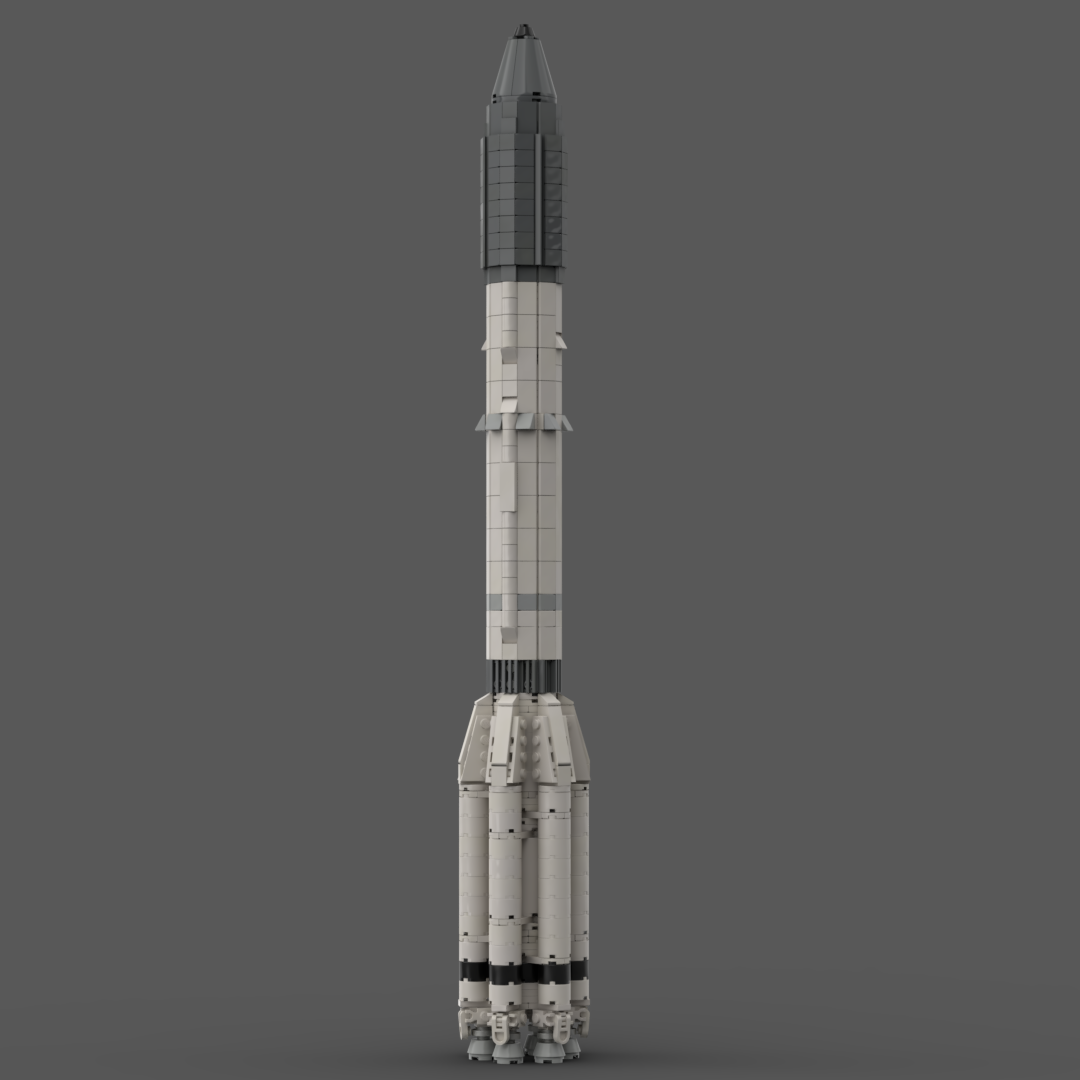
LEGO Designer:
Sebastian Schön (MoppeW40k)
Designed: April 2020
Categories:
Launch Vehicles,
All,
Space Agency - Roscosmos
The Proton-M launch vehicle consists of three stages; all of them powered by liquid rocket engines using the hypergolic propellant combination of dinitrogen tetroxide as the oxidizer, and unsymmetrical dimethylhydrazine for fuel.
The first stage is unique in that it consists of a central cylindrical oxidizer tank with the same diameter as the other two stages with six fuel tanks attached to its circumference, each carrying an engine. The engines in this stage can swivel tangentially up to 7° from the neutral position, providing full thrust vector control. The rationale for this design is logistics: the diameter of the oxidizer tanks and the two following stages is the maximum that can be delivered by railroad to Baikonur. However, within Baikonur the fully assembled stack is transported again by rail, as it has enough clearance.
The second stage uses a conventional cylindrical design. It is powered by three RD-0210 engines and one RD-0211 engine. The RD-0211 is a modified version of the RD-0210 used to pressurize the propellant tanks. The second stage is joined to the first stage through a net instead of a closed inter-stage, to allow the exhaust to escape because the second stage begins firing seconds before separation. Thrust vector control is provided by engine gimballing.
The third stage is also of a conventional cylindrical design. It contains the avionics system that controls the first two stages. It uses one RD-0213 which is a fixed (non-gimballed) version of the RD-0210, and one RD-0214 which is a four nozzle vernier engine used for thrust vector control. The nozzles of the RD-0214 can turn up to 45°; they are placed around (with some separation), and moderately above the nozzle of the RD-0213.
The Proton-M features modifications to the lower stages to reduce structural mass, increase thrust, and utilise more propellant (less of it remains unused in the tanks). A closed-loop guidance system is used on the first stage, which allows more complete consumption of propellant. This increases the rocket’s performance slightly compared to previous variants, and reduces the amount of toxic chemicals remaining in the stage when it impacts downrange. It can place up to 21 tonnes (46,000 lb) into low Earth orbit. With an upper stage, it can place a 3 tonne payload into geosynchronous orbit, or a 5.5 tonne payload into geosynchronous transfer orbit.
Designer-notes
Part count: 794 bricks, 84 lots.
| Unit | width | length | height |
|---|---|---|---|
| Studs | 13.1 | 12.9 | 63.4 |
| Centimetres | 10.5 | 10.3 | 50.7 |
| Inches | 4.1 | 4.0 | 20.0 |
Downloads
Further Information and References
Designer Notes
Part count: 794 bricks, 84 lots.
| Unit | width | length | height |
|---|---|---|---|
| Studs | 13.1 | 12.9 | 63.4 |
| Inches | 4.1 | 4.0 | 20.0 |
| Centimetres | 10.5 | 10.3 | 50.7 |
Related Posts
None found